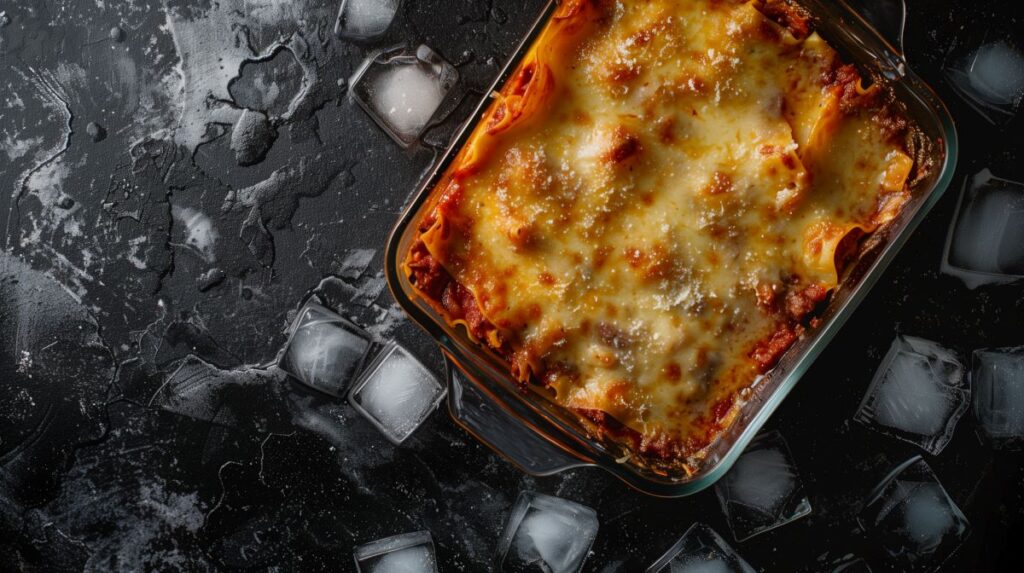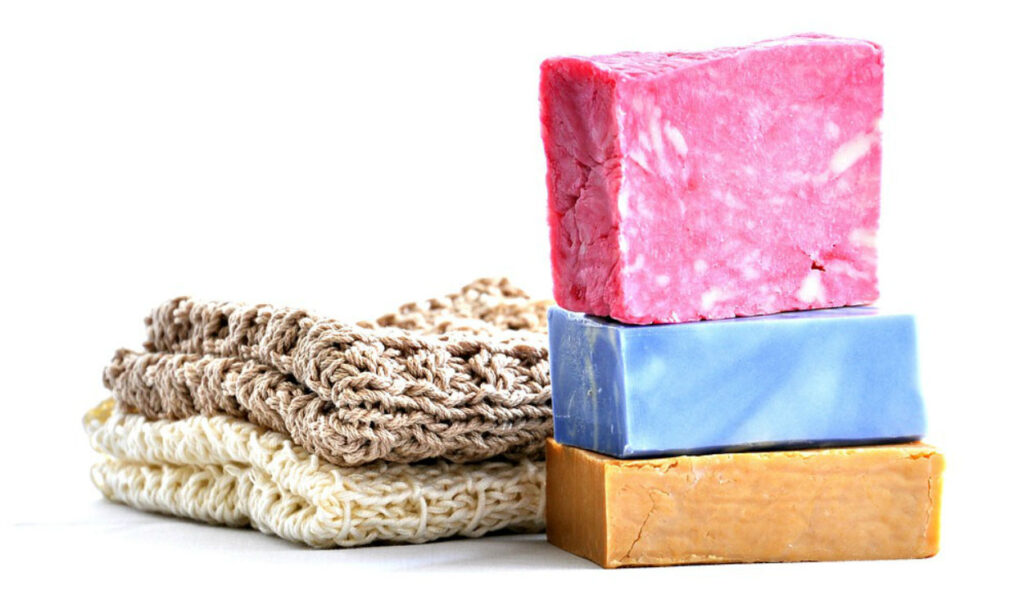Can You Put Pyrex in the Freezer? Simple Guide + Precautions
Are you wondering, “Can you put Pyrex in the freezer?” The short answer is yes, you can freeze food in Pyrex containers. With that in mind, we’ll explore how to freeze Pyrex in a super low-risk way that will ensure it will last for many years to come.
- Can You Put Pyrex in the Freezer?
- Why Pyrex is Suitable for Freezing
- 3 Key Guidelines to Safely Freeze Food in Pyrex
- Common Misconceptions About Freezing Pyrex
- Wrapping up: Freezing Pyrex
- Using Pyrex in the Freezer: FAQs
- Can you put Pyrex in the freezer?
- Is it safe to freeze food in Pyrex?
- How do you prepare Pyrex for the freezer?
- Can you transfer Pyrex from the freezer to the oven?
- Are there any food types that should not be frozen in Pyrex?
- How long can you keep food in Pyrex in the freezer?
- Can Pyrex glass break in the freezer?
In the past, Pyrex products were made of borosilicate glass, which is known for its durability in extreme temperatures. Nowadays, Pyrex is made with tempered soda lime glass in the US, which is still strong but may have different characteristics when exposed to freezing temperatures.
- Pyrex glass is generally considered freezer-safe.
- It’s important to check the specific instructions for your Pyrex product to ensure safe usage in the freezer.
- Always allow the Pyrex dish to come to room temperature before placing it in the freezer to avoid thermal shock.
- Avoid sudden extreme temperature changes (like from a hot over into the freezer) since Pyrex can experience thermal shock, which may cause it to crack or shatter.
We love our Pyrex containers, and they’re extremely durable—to the point that we even have decades-old hand-me-downs! So again, Pyrex glassware is indeed freezer-safe and a reliable food storage option at low temperatures.
Can You Put Pyrex in the Freezer?
Glass containers like Pyrex are a staple in many kitchens, but when it comes to freezing, there are some considerations to keep in mind. Let’s explore whether Pyrex can safely venture into the freezer and how to do it right.
Pyrex Freezer Safe Information:
Pyrex does indicate that its products are freezer-safe.
According to Pyrex’s guidelines, their glass containers can withstand freezing temperatures without shattering. It’s essential to check the specific Pyrex item you have for any temperature limits or recommendations to ensure safe usage.
Benefits of Freezing in Pyrex:
Using Pyrex for freezing has its perks. The thermal shock resistance of Pyrex glass makes it suitable for transitioning from freezer to oven without risk of breakage. Its non-porous surface also helps maintain food quality by preventing odors from lingering.
On the other hand, we’ve had a few bad oven experiences with materials like terracotta, even when they were initially at room temperature. Therefore, we only bake with the most durable, non-toxic, and non-leaching materials, glass or stainless steel.
Precautions to Take When Freezing in Pyrex:
To ensure a smooth freezing experience with Pyrex, it’s crucial to take some precautions. Here are some tips:
- Allow hot food to cool before placing it in the freezer to avoid thermal shock.
- Leave some space in the container for food expansion during freezing.
- Use airtight lids to prevent freezer burn and odors from affecting your food.
- Avoid placing cold Pyrex directly into a hot oven to prevent thermal stress.
Understanding the guidelines and handling precautions when freezing in Pyrex will prevent any issues you may read about online, such as exploding glass, cracking, and so on. Remember, proper care and some common sense will ensure your Pyrex dishes will serve you well in the freezer and beyond.
Why Pyrex is Suitable for Freezing
Thermal Shock Resistance of Pyrex
Pyrex is renowned for its exceptional thermal shock resistance and durability, making it an ideal choice for the freezer environment. We’ve got a huge family and we love cookware that can take a bit of abuse. Pyrex has always been up to the task for us.
The thermal shock resistance of Pyrex glass stems from its unique composition, allowing it to withstand sudden temperature changes without cracking or shattering for the most part.
When placing Pyrex in the freezer, the glass can adapt to extreme cold seamlessly, ensuring the safety of your food and the integrity of the container. But again, you still need to use some common sense and avoid drastic temperature changes.
Materials Used in Pyrex Production
Pyrex products were historically crafted from borosilicate glass in the US, a material known for its durability and resistance to thermal stress.
However, modern Pyrex containers in the US are manufactured using toughened tempered soda lime glass. This change was most likely a cost-cutting measure. However, this shift in materials has not compromised Pyrex’s freezer compatibility all that much.
The overall quality and composition of modern-day Pyrex glass ensures that it remains a reliable choice for freezing food, maintaining its strength and functionality over time.
Impact of Freezing on Pyrex Longevity
Freezing food in Pyrex containers can have a minimal impact on the longevity of the glassware if handled properly.
- Following the recommended freezing guidelines we mentioned, like avoiding sudden temperature changes, it is advisable to preserve the quality of Pyrex over time.
- Again, never transfer a frozen container directly from the freezer to a hot oven or vice versa.
By handling Pyrex with care and maintaining it according to instructions, you can extend its lifespan and continue to enjoy the benefits of using Pyrex for freezing food.
3 Key Guidelines to Safely Freeze Food in Pyrex
When it comes to safely freezing food in Pyrex containers, preparation is key to maintaining the quality of your meals. Here’s a step-by-step guide to help you freeze your favorite dishes without compromising taste or texture.
1.) Preparing Pyrex for Freezing
Before putting Pyrex in the freezer, ensure that the container is clean and dry. To avoid thermal shock, let hot foods cool to room temperature before placing them in the Pyrex dish. That said, it’s not the end of the world if they’re still a bit warm.
This precaution helps prevent the glass from cracking due to sudden temperature changes.
2.) Storage Tips for Frozen Pyrex Dishes
Efficiently storing frozen Pyrex dishes starts with proper labeling and organization. Label each container with the date and contents to easily identify them later.
When stacking Pyrex containers in the freezer, leave some space between them to allow for proper air circulation, which helps maintain the quality of the frozen food.
3.) Thawing Pyrex Frozen Food
When it’s time to enjoy your frozen delights, it’s essential to thaw Pyrex frozen food safely. The best method is to transfer the Pyrex dish from the freezer to the refrigerator and let it thaw overnight.
This gradual thawing process helps retain the texture and flavor of the food. Avoid using the microwave for thawing Pyrex containers to prevent uneven heating that can lead to food spoilage.
Sometimes, if we’re in a hurry, we’ll take a meal out of our freezer and then put it into the oven for 10-15 minutes at a low temperature (170°F-200°F)without preheating. Use caution if you do this, and put the dish on the middle rack so it’s farther from the top and bottom heating elements.
After the glass has warmed a bit, we’ll then increase the temperature. That way, the meal will gradually heat up in the Pyrex dish as the oven heats up.
By following these steps and tips, you can ensure that your Pyrex containers keep your meals fresh and delicious when frozen and thawed. Proper preparation and storage play a significant role in maintaining the quality of your favorite dishes, even after freezing them.
Common Misconceptions About Freezing Pyrex
Myth vs. Reality: Freezing Pyrex
One prevalent misconception surrounding Pyrex is that it cannot be safely placed in the freezer. We think this is just due to the misconception that glass shouldn’t be frozen. While that’s generally true, it’s not the case with Pyrex due to the mentions we mentioned earlier.
Glass containers like Pyrex can also go from the freezer to the oven or microwave without issue using a few simple guidelines (see previous section), but it’s essential to avoid sudden temperature changes.
Experiences with Pyrex Freezing
Again, I’m not sure what we’d do without our Pyrex. From storing homemade soups and stews to freezing ready-to-bake casseroles, Pyrex has consistently delivered for our family. We can’t even imagine lasagna that’s not in a glass Pyrex dish.
When transitioning Pyrex containers from freezer to oven, I’ve learned the importance of patience; that’s true of most kitchen tasks in general.
- Allowing Pyrex to defrost slowly in the refrigerator or countertop minimizes the risk of thermal shock.
- This approach not only preserves the integrity of the container but also ensures the cooking of the stored food.
For more insights on freezing Pyrex containers, check out this informative article on Southern Living.
Wrapping up: Freezing Pyrex
While Pyrex isn’t made with borosilicate glass but with tempered soda lime glass, it is still safe to put Pyrex in the freezer when following proper guidelines. This versatility makes Pyrex a convenient and reliable option for storing and freezing meals for meal planning.
Whether you’re meal prepping for the week ahead or saving leftovers for later, Pyrex offers a practical solution for freezer storage. Embrace the convenience and safety of using Pyrex in your freezer, knowing that it can withstand freezing temperatures and protect your food effectively.
Who knows, your grandchildren may still be using your Pyrex many years from now.
Using Pyrex in the Freezer: FAQs
Have you ever wondered about the safety of using Pyrex in the freezer? We’ll address common questions and provide you with essential information so you can confidently store your food in Pyrex glass containers.
Can you put Pyrex in the freezer?
Yes, Pyrex glass is freezer safe. You can safely store your food in Pyrex containers in the freezer without any issues. The tempered soda lime glass used in US Pyrex products can withstand freezing temperatures, making it a suitable choice for freezer storage.
Is it safe to freeze food in Pyrex?
Freezing food in Pyrex containers is perfectly safe. The durable nature of Pyrex glass allows it to withstand temperature changes without shattering. However, it’s essential to follow proper guidelines for freezing and thawing to ensure the best results.
See our post above for more information on freezing guidelines.
How do you prepare Pyrex for the freezer?
Before placing Pyrex in the freezer, make sure the food has cooled to room temperature to prevent thermal shock. Leave some room for expansion in the container to avoid breakage. Cover the Pyrex dish securely with a lid or plastic wrap to protect the food from freezer burn.
Can you transfer Pyrex from the freezer to the oven?
While Pyrex is versatile and can handle temperature changes, it’s crucial to follow specific guidelines for transitioning Pyrex from the freezer to the oven. Let the Pyrex dish come to room temperature before placing it in a preheated oven to avoid sudden temperature changes that could lead to breakage.
Are there any food types that should not be frozen in Pyrex?
While Pyrex is generally safe for freezing a wide variety of foods, it’s best to avoid freezing liquids to the very top of the container to so there will be enough room for expansion. So, it’s good practice to leave some space for this expansion.
How long can you keep food in Pyrex in the freezer?
Food stored in Pyrex containers can typically be kept in the freezer for up to 2-3 months without compromising quality. Properly sealed and stored food will maintain its flavor and texture for an extended period in the freezer. We’ve even successfully kept food in the freezer for up to 6 months.
Can Pyrex glass break in the freezer?
Pyrex glass is designed to withstand extreme temperature changes, including transitions from the freezer to the oven.
However, to prevent breakage, it’s essential to follow recommended guidelines for freezing and thawing food in Pyrex dishes to ensure they remain intact. If you don’t mind spending more money, you can purchase borosilicate glass baking dishes, which can better handle thermal shock.
But again, Pyrex only offers soda lime glass cooking products in the US.


